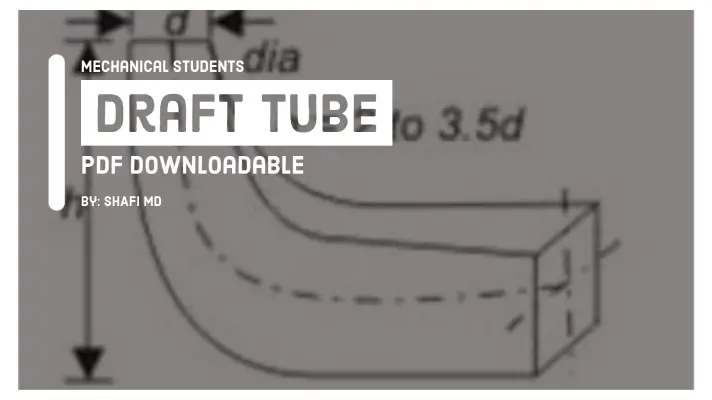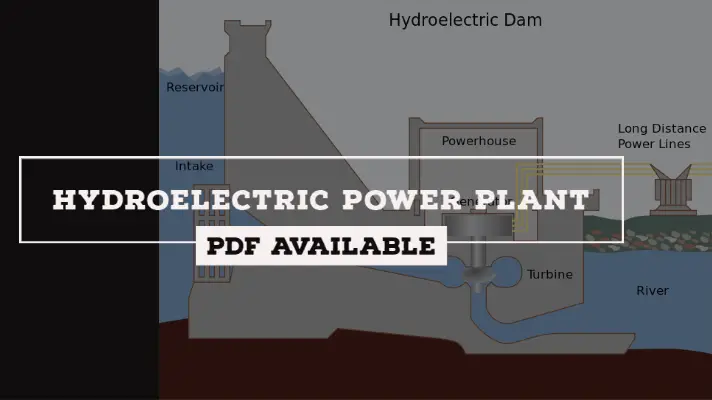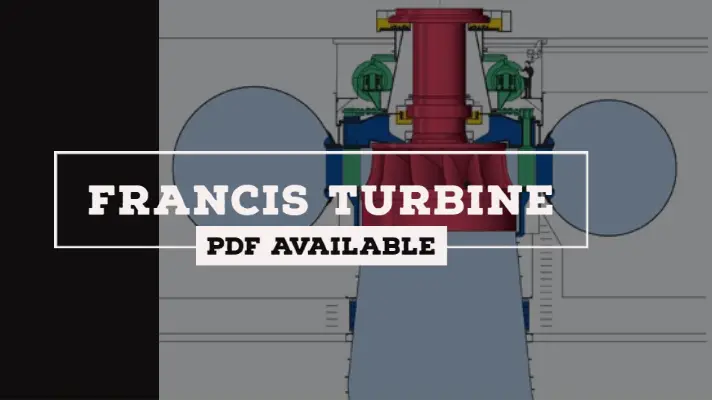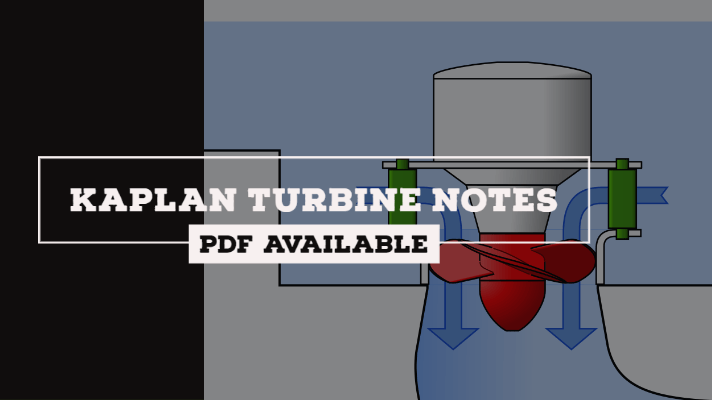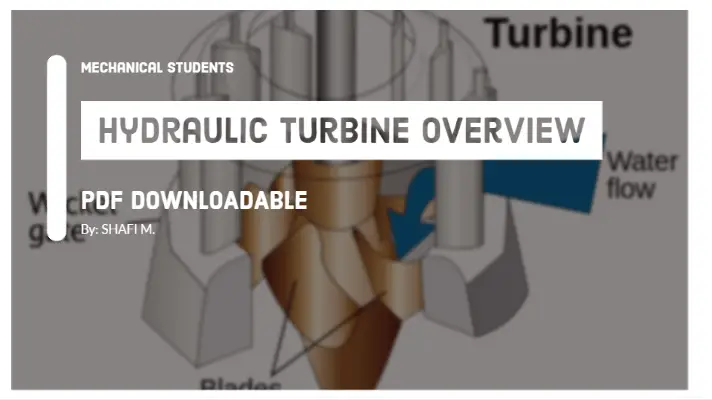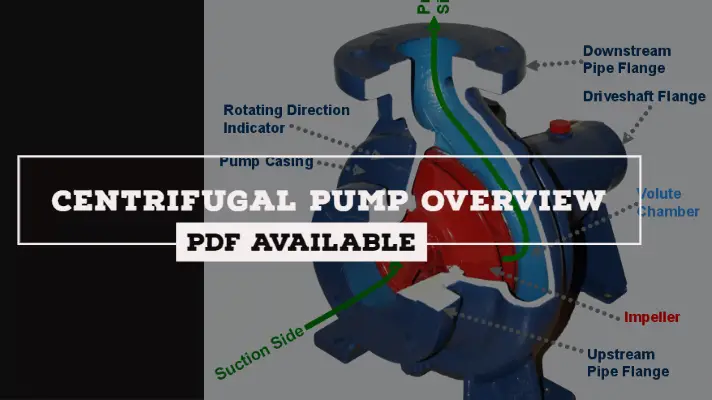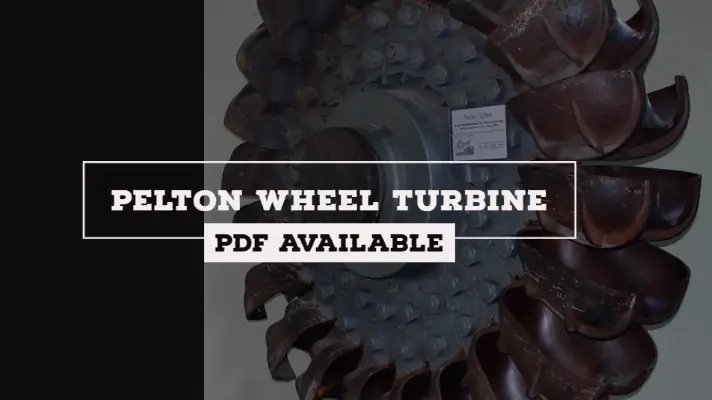Difference Between Refrigerator, Heat Pump, and Heat Engine [PDF]
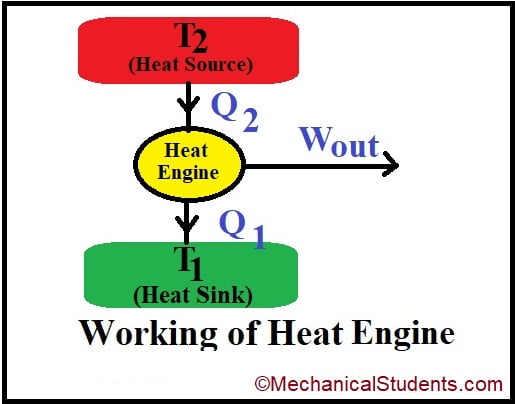
Hello Readers, in today's session, we will discuss on the Difference between a Refrigerator, Heat Pump, and Heat Engine in a detailed way with respective figures. Before going to the differences, let give you an overview of these three devices.
What is a Heat Engine?
A heat engine is a system that converts Thermal energy into Mechanical Energy.

In a heat engine, the heat supplied to the engine is converted into useful work. If Q2 is the heat supplied to the engine and Q1 is the heat rejected from the heat engine, then the network done by the engine is given by
We = Q2-Q1
So the performance of the engine or C.O.P is given by
Generally,
Efficiency is calculated as = We/Q
but the C.O.P is the reciprocal of efficiency and is given as
C.O.P= (Q2-Q1)/Q2
What is a Refrigerator?
A refrigerator is a reversed heat engine, where heat is pumped from low temperature (cold body--> Q1) to high temperature (hot body-->Q2).
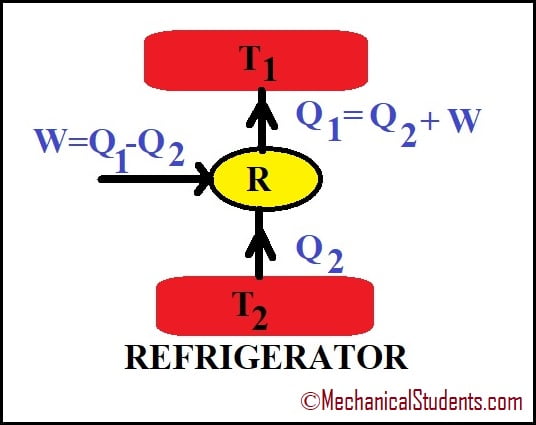
So, Work WR is required to be done on the system.
WR = Q2-Q1
The performance of a refrigerator is the "ratio of the amount of heat taken from the Cold body Q1 to the amount of work to be done on the system WR.
(C.O.P)R = Q1/ WR = Q1 / (Q2-Q1)
What is a Heat pump?
Any refrigerating system is a heat pump, which extracts heat from a cold body and delivers it to a hot body.
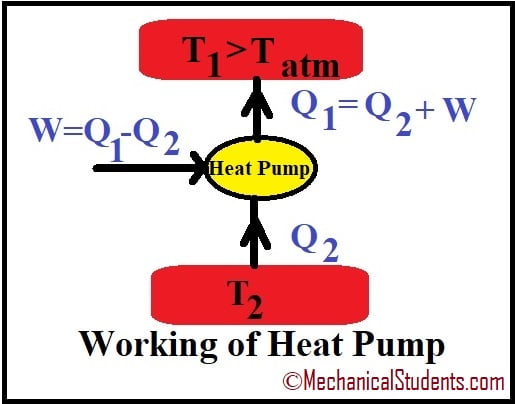
Thus there is no difference in the operation cycle of a refrigerator and a heat pump
- The main difference between them is in their operating temperatures.
- A refrigerator works between cold body temperature (T1) and atmospheric temp (Ta) whereas the heat pump operates between hot body temp (T2) and the atmospheric temperature (Ta).
- A refrigerator used for cooling in summer can be used as a heat pump for heating in the winter season.
- so Wp = Q2-Q1
(C.O.P)hp = Q2/ WR = Q2 / (Q2-Q1)
Where hp-heat pump
This is the detailed information on the Working Principle of Heat Pump.
Let's see the overall Difference between a Refrigerator, Heat Pump, and Heat Engine in the form of a tabular column.
Difference between a Refrigerator, Heat pump, and Heat engine:

The major differences between Refrigerator, Heat Pump, and Heat Engine are presented below in the form of a table.
| Refrigerator | Heat Pump | Heat Engine |
|---|---|---|
| A refrigerator is a reversed heat engine, where heat is pumped from a body at low temperature to a body at high temperature. | Any refrigerating system is a heat pump, which extracts heat from a cold body and delivers it to a hot body. | A heat engine is a system which converts Thermal energy into Mechanical Energy. |
| The network done by the refrigerator is given by WR= Q2-Q1 | The network done by the heat pump is given by Wp= Q2-Q1 | The network done by the engine is given by We= Q2-Q1 |
| The C.O.P. of Refrigerator is (C.O.P)R = Q1/ WR = Q1 / (Q2-Q1) | The C.O.P. of heat pump is (C.O.P)hp = Q2/ WR = Q2 / (Q2-Q1) | The C.O.P. of heat engine is (C.O.P)e= (Q2-Q1)/Q2 |
Conclusion:
Today we have learned the Difference between a Refrigerator, Heat Pump, and Heat Engine and solved equations and found out the formulas too. I hope you have understood this topic and If you have any doubts, you can ask us and we will reply to you within 24 hrs.
More Resources:
Vapour Compression Refrigeration Cycle
Winter and Summer Air conditioning
Difference Between Nano, Macro, Micro and Smart Material
What is the Difference Between Diathermic and Adiabatic Process?
References [External Links]:
- Heat Engines-PDF
- How Does a Heat Pump Work - Carrier
- Heat Engines - an overview| ScienceDirect Topics


